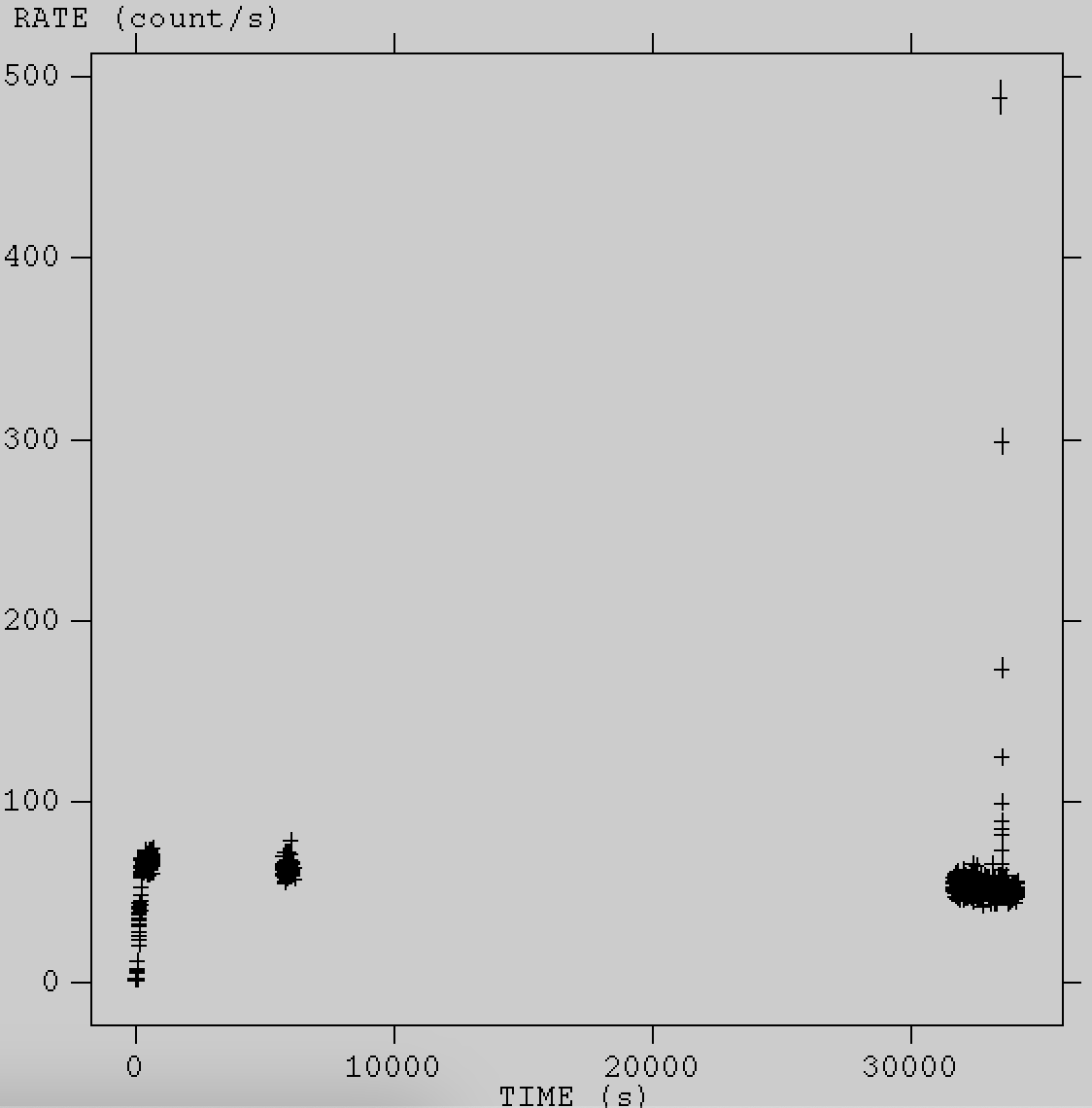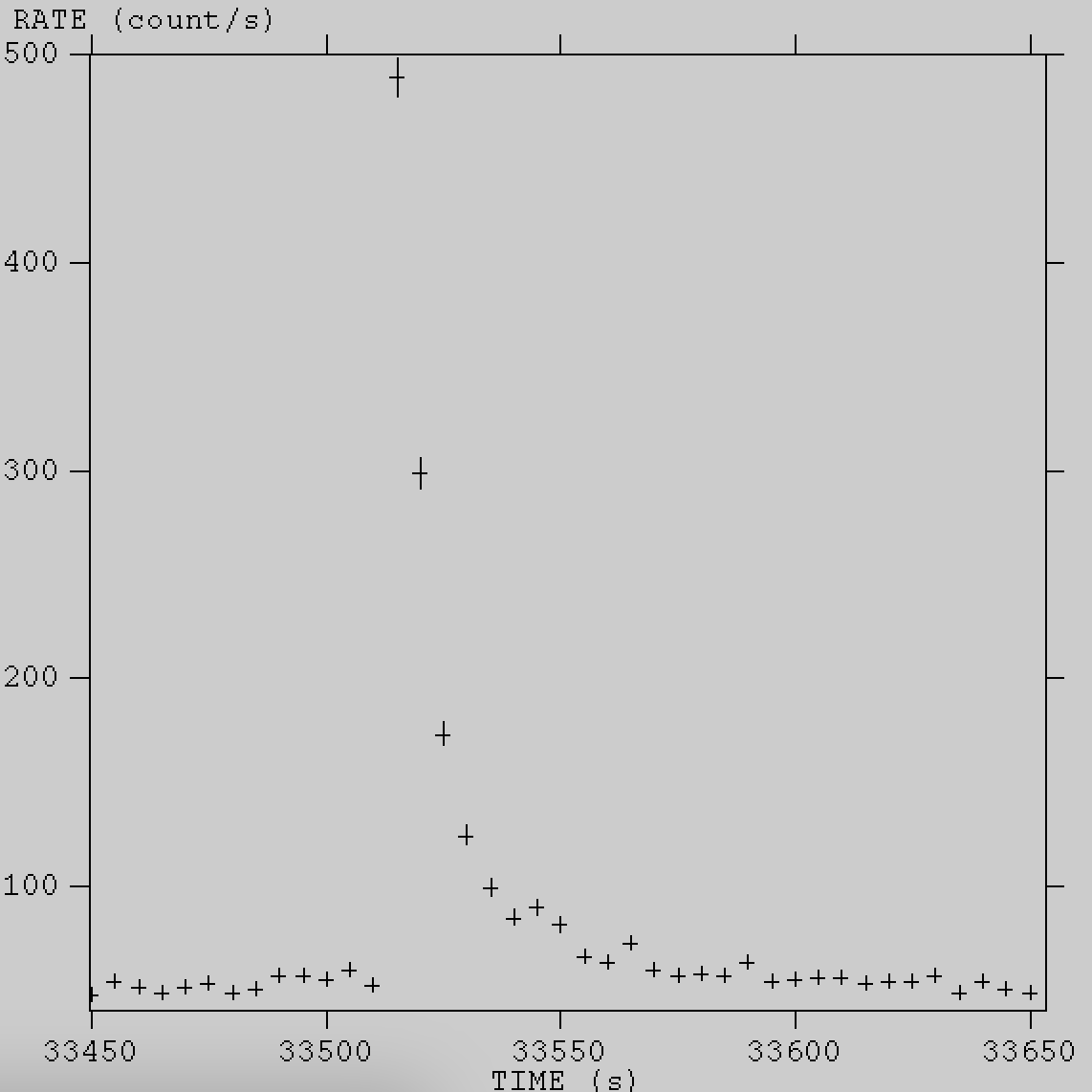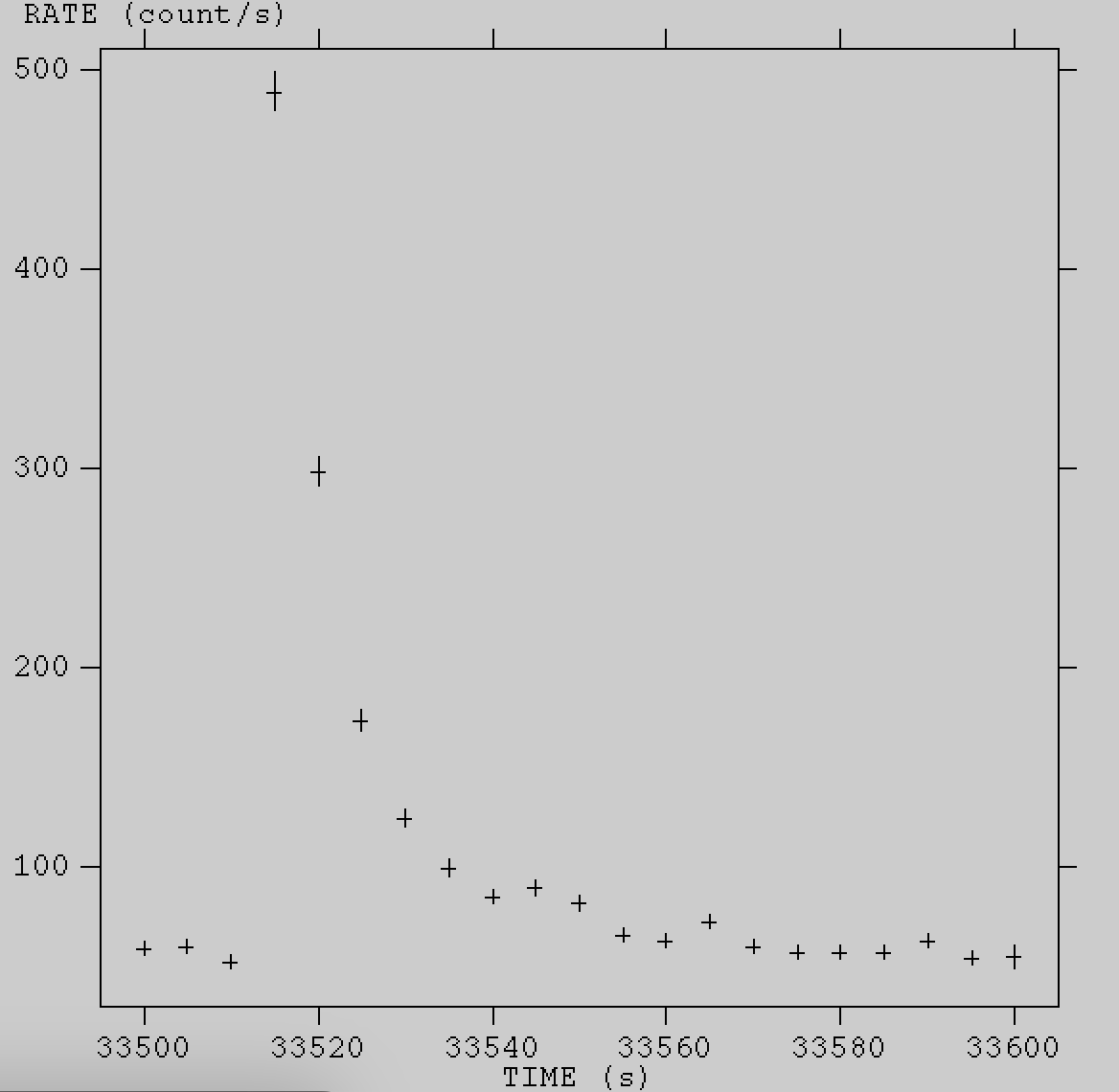Extracting a Spectrum During a Flare/BurstReturn to: Analysis Threads | Analysis Main Page
OverviewThis tutorial is designed for users who have a burst or flare in their dataset and wish to extract a spectrum corresponding to that feature in the light curve. If you have already identified the flare, it is useful to have the start and stop times determined in NICER mission time, but these times can also be obtained using NICER light curves as demonstrated below. Read this thread if you want to: Extract a spectrum from a flare or bust Last update: 2023-07-19 IntroductionNICER often observes highly variable X-ray sources, which may show flaring or bursting behavior. It is often useful to break the observation into several pieces to understand how the source's spectrum evolves with time. Here we provide a short example of how such an analysis can be accomplished.
To demonstrate this type of analysis we will use an observation of the source
Swift J1858.6-0814, which is an accreting NS LMXB that showed a type I X-ray burst.
If you would like to follow along, the observation can be downloaded from the HEASARC
data archive using the following wget command:
See How to access NICER data for more information on how to access NICER data. Analysis
First the data should be reprocessed with the nicerl2 task in order to apply the latest
filtering criteria and calibrations:
Next, a light curve needs to be made so that we can select the times of the X-ray burst which we will
use to extract the spectrum from. We will make a 5 s binned light curve in the 0.5-10 keV energy range
using the following command:
The above parameters (e.g., energy, bin size) can be adjusted to match the needs of your science.
Once we have our light curve, we can open and plot it using fv. This can be done using the command:
With the light curve file open, you can click "Plot", then select "Time" for the x-axis, "RATE" for the y-axis, and "ERROR" for the "Y Error". This will produce the following plot.
There is a very bright burst seen in the third segment of the observation. We can zoom in on this segment by clicking and dragging our cursor to form a box surrounding this segment. This will zoom in on the segment. From there we can further zoom in on the burst by repeating this procedure and it should look like the image shown below.
In order to extract the spectrum of just the X-ray burst, we need to use the start and stop
time of the burst. However, these times must be given in mission time but the light curves
are not given in this time system. Therefore, we need to convert the light curve times to
the corresponding mission times. To do this, we can use the following command:
This command searches for and prints the TIMEZERO keyword from the light curve extension. This is needed because it provides the start time of the light curve in mission time. Running this command should print "TIMEZERO= 1.963268645000000E+08 / Time Zero". So this is the time we will use to convert to the mission time. Now we will extract the times of burst from the light curve. Since this is a demonstration, we will not be very strict on extracting the spectrum at the exact start of the burst, we will simply use a 100 s interval from 33500 to 33600, which captures the burst (see Figure 2). More precise filtering can be done by using a finer time binning to make the light curve, and then plotting it using, for example python, to extract more accurate start and stop times.
Now that we have the start and stop times of the burst, as well as the conversion to mission time, we are
ready to create a custom Good Time Interval (GTI) file. To accomplish this task, we will use the maketime ftool,
which can be used to create custom GTI files. The input to maketime is the input mkf file and the output
file directory/name. Then we add a statement to filter on the start and stop time of the flare. These times
are obtained by simply adding TIMEZERO to the light curve times (33500 and 33600) as such:
Once we have made the GTI file, we can perform a few checks to make sure the file was created correctly. The
first check is to simply open the file with fv, click "All" in the STDGTI extension and make sure the start
and stop times agree with those given to maketime. Another quick check that can be performed is to remake the
light curve supplying the newly created GTI file using (note the changed suffix!):
When the light curve is plotted in fv it should look like this figure.
Now that we have confirmed that our GTI file is producing the expected behavior, we are ready to extract our spectrum. The spectrum can be extracted by supplying the GTI file to nicerl3-spect as follows:
Once the spectrum is produced, we can again double check that the appropriate GTI was applied by loading the data into XSPEC using the load file and checking that the exposure time is 100 s. CaveatsNote that the 3C50 background model is currently not supported when using nicerl3-spect with a GTI file. A workaround to this is to run nicerl2 with the custom GTI file, and then run nicerl3-spect on that output from nicerl2. In this case no GTI file needs to be passed to nicerl3-spect. Here we did not apply any barycenter correction to the photon arrival times. This should be done if more accurate time filtering is required. In some NICER datasets, it may be unclear if the flare/burst you are seeing is real or not. Please see our page on How to determine whether a flare is from the source or background for more information on this topic. Modifications
|





